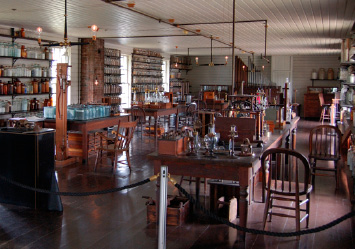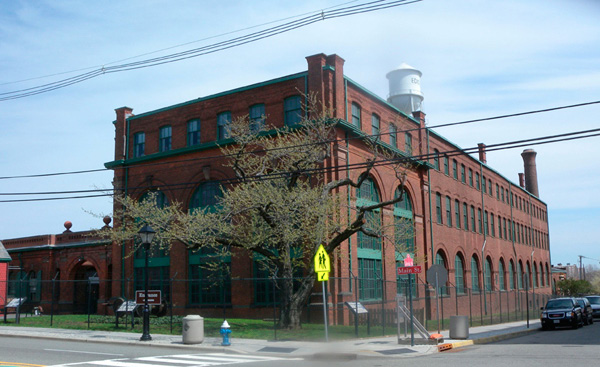Chapter Twelve
Keeping History Alive

Edison’s Menlo Park laboratory, preserved at Greenfield Village.
Today, one measure of Edison’s contributions to the world can be seen in the efforts to keep his laboratories in Menlo Park and West Orange as places where people can visit, get a feel for how Edison worked, and understand something of the process that enabled him to invent so many things in just one lifetime.
Part of Edison’s Menlo Park laboratory had already been moved to Henry Ford’s Greenfield Village museum, and other buildings had been reconstructed there. Ford had also moved Edison’s entire Fort Myers, Florida, lab to his new museum. Ford had even shipped actual soil from the Menlo Park site to the reconstruction site. But Edison always said that his laboratory in West Orange, New Jersey, was the best in the world. It housed the most modern equipment and created products that were on the cutting edge of technology. The West Orange lab has now become the Edison National Historic Site.
Today, the National Park Service (NPS) at the Edison National Historic Site is proud to tell the story of the man who brought light and sound to the lives of people around the world. In 2009, a major restoration effort went into repairs to preserve the campus of brick buildings, which in turn will help maintain the 400,000 artifacts left behind by Edison.
The installation of heating and air conditioning systems, underground water lines, and electrical conduits in old, historical buildings is an important part of what the National Park Service does. Such work at the West Orange site means that future generations will be able to come here to learn about Edison and his extraordinary life.
Starting at the front gate on Main Street, the first stop is Edison’s physics laboratory, which is now the visitors center. By using an audiotape machine and punching in the numbers assigned to various stations, visitors can hear one of Edison’s muckers talk about life at the laboratory in the Old Man’s time.
Visitors at the center can also watch a film about the different places where Edison lived, from his childhood house in Milan, Ohio, to his winter home in Fort Myers, Florida. Also on display are many one-of-a-kind artifacts and a number of “firsts,” such as the phonograph and a talking doll.
Visible from the courtyard of the visitors center is a small, red wooden building, quite unlike the other tall brick buildings. Called Building 11, it is where the first experiments in the mass production of disc records took place.

Thomas Edison’s laboratory complex in West Orange, New Jersey.
At the Main Laboratory Building, visitors see where the first motion picture—a film of a boy juggling Indian clubs—was made. Down the hall is Edison’s chemistry lab. Here, too, is the drafting room where blueprints, an integral part of making early inventions come to life, were drawn.
On the third floor is the old photo lab, which still has the smell the chemicals used in developing pictures, and the music room, where visitors can listen to a radio show of early Edison recordings, originally made on wax cylinders. In addition, there is an entire room of phonographs, as well as a huge chamber that contains floor-to-ceiling shelves filled with incredible Edison artifacts. Visitors can then continue on through the pattern shop, the machine shop, and Edison’s office and library.
Both the Edison National Historic Site and the Menlo Park lab at Greenfield Village are places where visitors can experience what it might have been like to be a part of Edison’s “idea factory,” in that golden time when his inventions were changing the world.